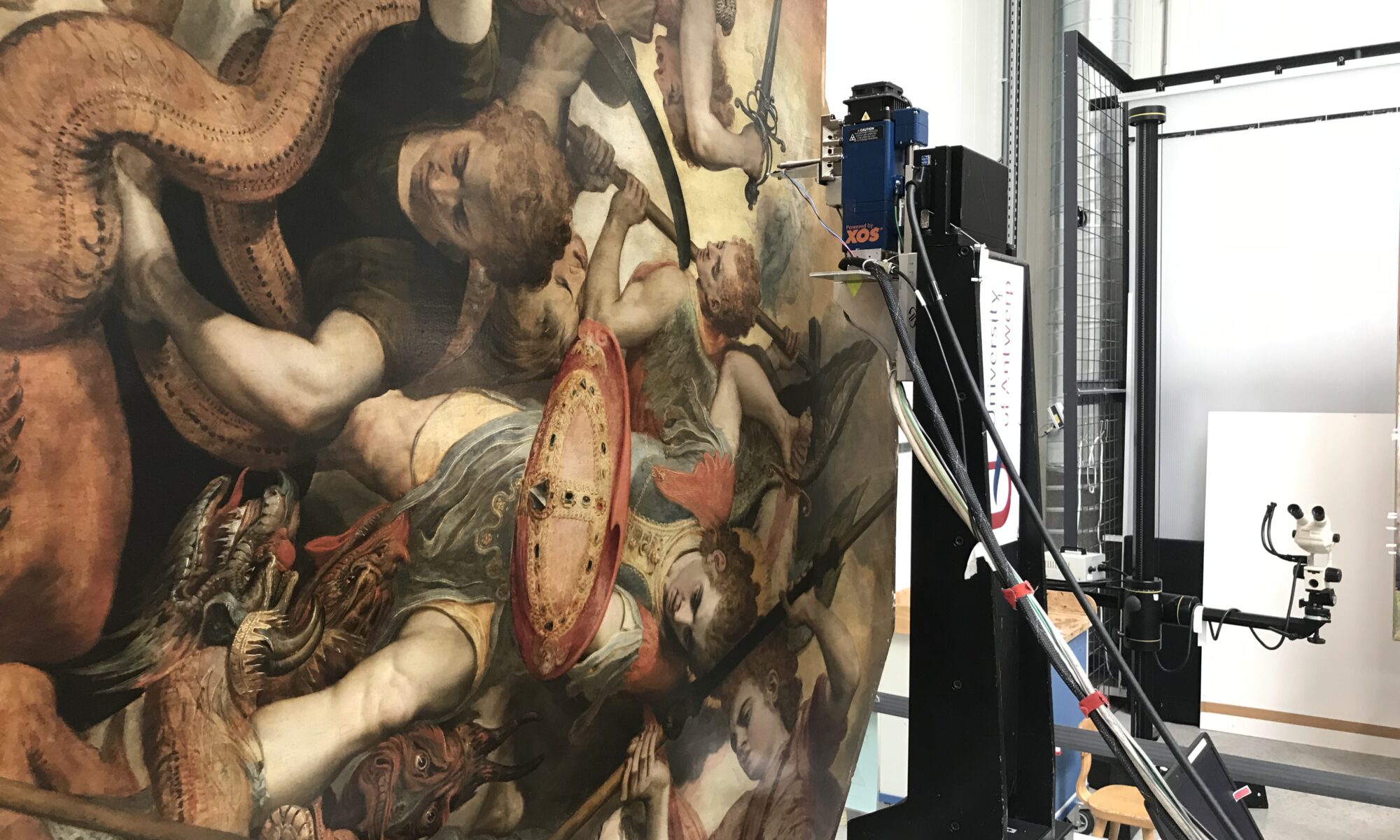The Fall of the Rebel Angels, created by Frans Floris I in 1554 is currently undergoing a restoration treatment. This Flemish masterpiece is often credited as one of the most important works of Frans Floris I. Together with two side panels -now lost- it had a prominent place above the Fencers’ Guild Altar at the Antwerp Cathedral. Now, it is part of the collection of the Royal Museum of Fine Arts Antwerp. As part of the preliminary research, a macro XRF-scan is performed. Why? Because this enormous panel painting – over 3 meters high – still holds a lot of secrets!
One of the most prominent questions is that the upper trapezoidal part appears to be darker and more damaged than the rest of the panel. Which raises the question whether this upper part is original or was added to the panel at a later stage. A macro XRF-scan can shed light on this matter. This chemical imaging technique allows you to compare the composition of the pigments of the upper and lower part of the panel and gives insight in how and where certain pigments were used. This not only gives insight into the creative process of Frans Floris I, it might also answer the question whether the upper part was created by the master himself. In this video, you can see the scanning in action.
We will keep you posted on the results!
To learn more about the turbulent history of the painting, visit the KMSKA website.
ARCHES works with AXES on this project. Visit the AXES research group of the University of Antwerp for more information on chemical imaging or in situ MA-XRF scanning of paintings.


